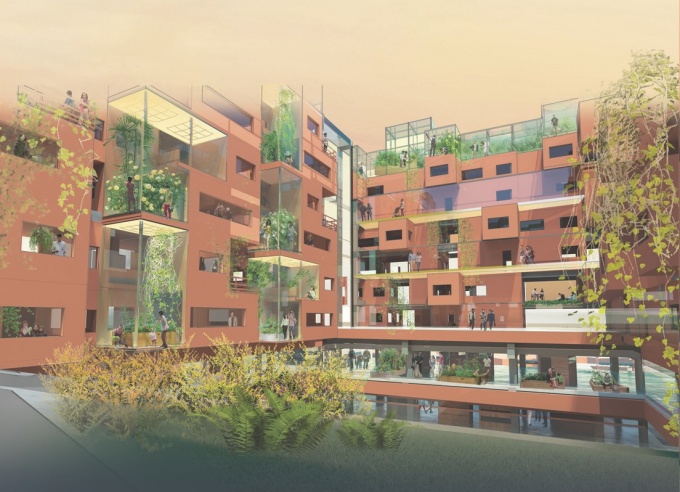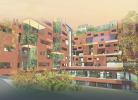City/Life

Transitional Living Community (TLC) - Morgan Mansfield/ Stanicka Mathurin
The City/Life studio puts a focus on the urban dwelling as a threshold between self and society, between the local and the goal, and between nature and culture.
Galleries
Ambrytown - Kyle Donnelly/Matthew Straub
Transitional Living Community (TLC) - Morgan Mansfield/ Stanicka Mathurin
Urban Village - Justin Neu/Edinam Segbefia
Students
Kyle Donnelly/Matthew Straub
Morgan Mansfield/Stanicka Mathurin
Justin Neu/Edinam Segbefia
Faculty
Charles Davis II
Annette LeCuyer (coordinator)
Bradley Wales
Laura Garofalo
Term
ARC 403, Fall 2018
Program
BS Arch
The balance between these conditions changes at different scales – from room to city. An understanding of the sociocultural environment of the city, and how a proposal situates itself within that context, is critical in developing good urban form. The following housing proposals share a strong focus on creating a communityorientated living environment.
The opportunity to provide housing for the homeless population allowed us to design with empathy and compassion.
– Morgan Mansfield and Stanicka Mathurin
Morgan Mansfield and Stanicka Mathurin’s Transitional Living Community aimed to eliminate the stigma of homelessness, allowing residents to have a sense of permanence and ownership in their state of transience.
Matthew Straub and Kyle Donnelly’s Ambrytown acted as transitional housing for displaced homeowners, helping them prepare to reenter into homeownership.
Justin Neu and Edinam Segbefia’s Urban Village was designed to accommodate families that homeschool or work from home using methods of fine-grained urbanism.
Mansfield and Mathurin are both interested in the multidisciplinary nature of combining practical and conceptual thought. For this project, they were inspired by the idea of empathy, particularly in regard to homelessness.
Straub and Donnelly are interested in how architects, planners, and designers have the freedom, capability, and power to have an impact on the future. This idea evolved with the project as they focused on issues of foreclosure in Buffalo, aiming to provide a community with hope for a better future.
Neu and Segbefia were inspired by theirown personal experiences and range in educational backgrounds. Segbefia has lived in Lagos, Nigeria; Accra, Ghana; Tokyo, Japan; New York City; and Buffalo; while Neu has studied in private, public, and homeschool environments. The dynamics of the authors’s pasts led them to create a community that is both internally and externally supportive.
















